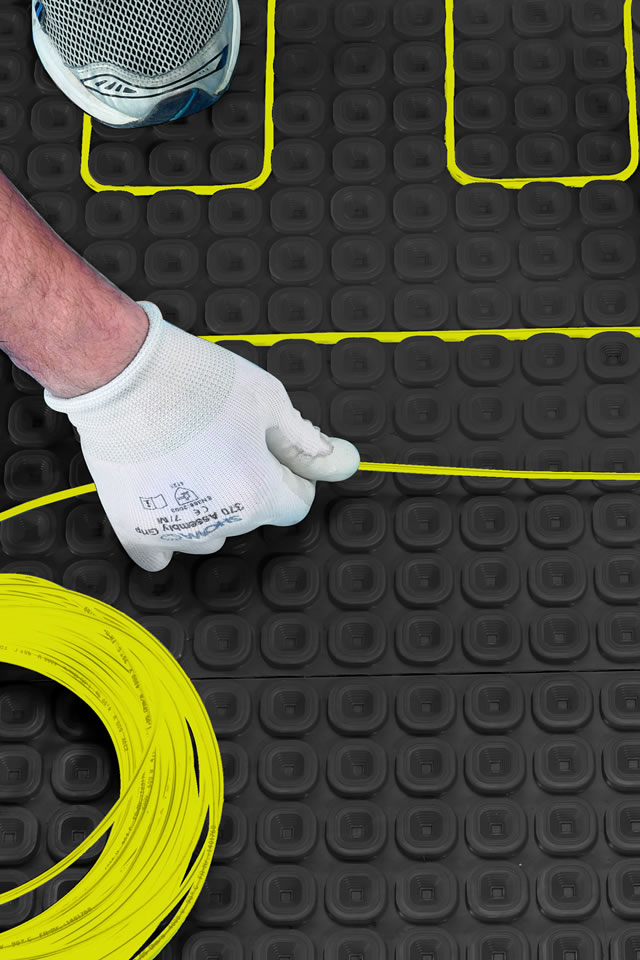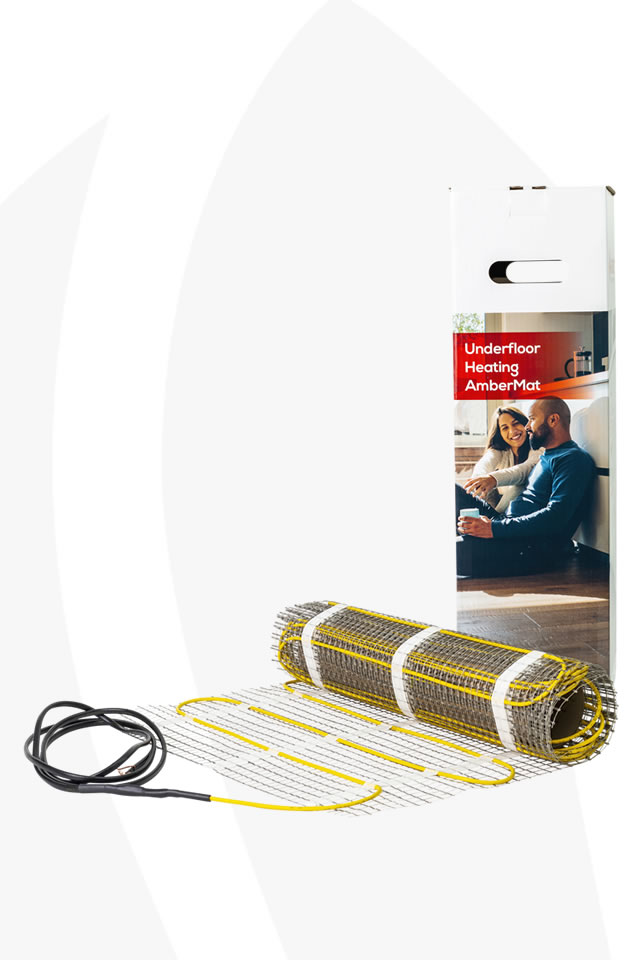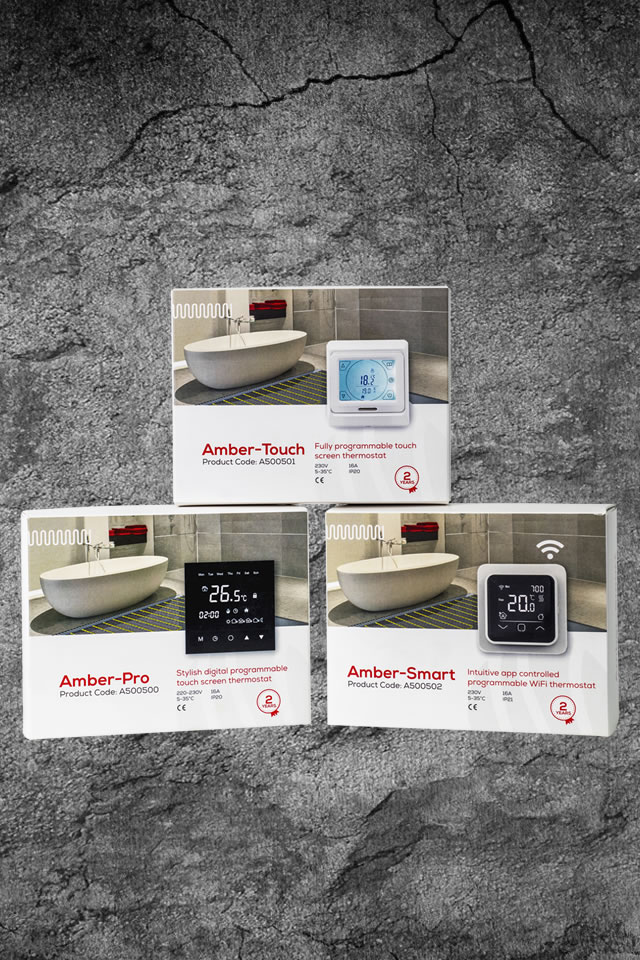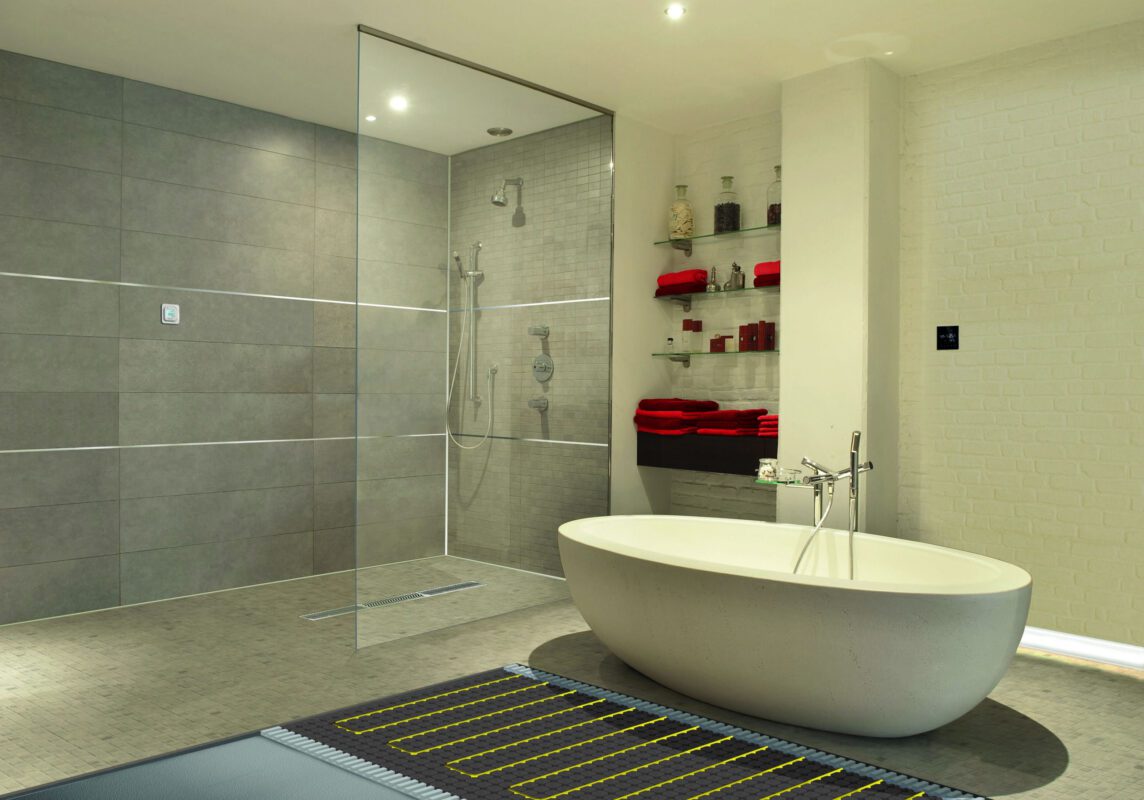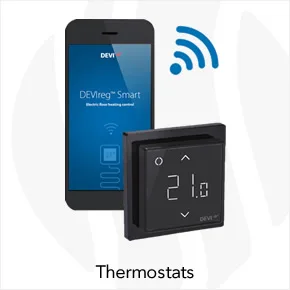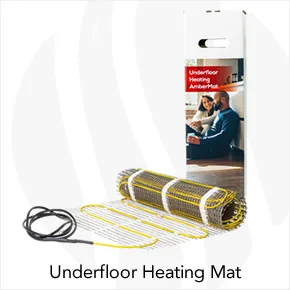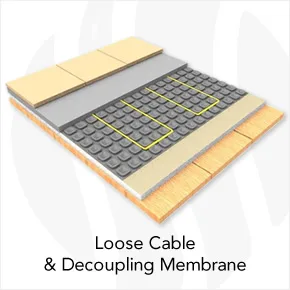Best Electric Underfloor Heating for 2024
Updated April 18, 2024 by Ben
Electric floor heating systems can make your home more comfortable, but which system should you choose? To find the best electric underfloor heating system for your home, you need to understand your options and how each system works.
Most homeowners will go with one of two solutions: a loose cable/membrane system or a underfloor heating mat system. Let’s explore each one.
Loose Cable Floor Heating Systems
A loose cable system offers flexibility and an easy installation process.
Here’s how it works:
- Spooled heating cable is run back and forth across the heating area.
- Plastic cable guides or tape help keep the cable secure.
One big advantage of a loose cable system is that you can easily heat any shaped space, even those with odd angles and tight corners.
Although this type of system offers flexibility, it’s still important to ensure that the cables are evenly spaced. Proper spacing will allow for even heat distribution across the floor.
Decoupling Membrane Floor Heating Systems
Amber electric underfloor floor heating systems use a decoupling membrane to keep the heating cable tidy and secure.
These polypropylene membranes have specially designed studs that create channels for embedding heating cables. On the underside of the mat is a polypropylene fabric that helps keep the system in place.
Quality decoupling membranes do not require expansion joints in the screed before laying tile, making this type of system easy to install.
One caveat with a decoupling membrane is that it requires the right substrate. Suitable options include:
- Timber floors
- Plywood panels
- Concrete
- Cement, anhydrite or green screed
- Tile back boards
While a decoupling membrane can help ensure even heat distribution, it’s not an ideal option for awkwardly shaped rooms.
Loose Cable vs Membrane vs. Mats: Which is the Best Electric Underfloor Heating Option?
Loose cables are quick and easy to install and are the perfect choice if you’re renovating your floor. You gain flexibility with these systems because you can run them across the floor, taping them to the substrate to create the ideal heating pattern.
Do you have an irregular-shaped floor?
Cables allow you to heat the entire surface with precision compared to membrane systems.
Decoupling membrane systems allow you to have greater control of your wiring because they have studs that form channels. You can wire the cable through the studs and accommodate most floor patterns.
But here are a few reasons not to choose a membrane:
- They’re not ideal for irregularly shaped areas
- You’re not using one of the suitable substrates mentioned in the previous section
- Thickness is an issue
Our heating cable has a 4mm thickness and the membrane system has a 5.5mm thickness. While the difference is minimal, it’s worth noting for some installations.
You can purchase electric radiant heating mats that already have all of the cables in place and are installed under the floor’s surface. You’ll find these mats installed in hardwood flooring areas, kitchens and bathrooms.
The benefit of mats? You don’t have to do any of the wiring yourself. But you are limited to the shape of the mat.
Still not sure what the best electric underfloor heating system is for your home?
Contact us and we’ll help you decide on the perfect system after asking just a few questions.

